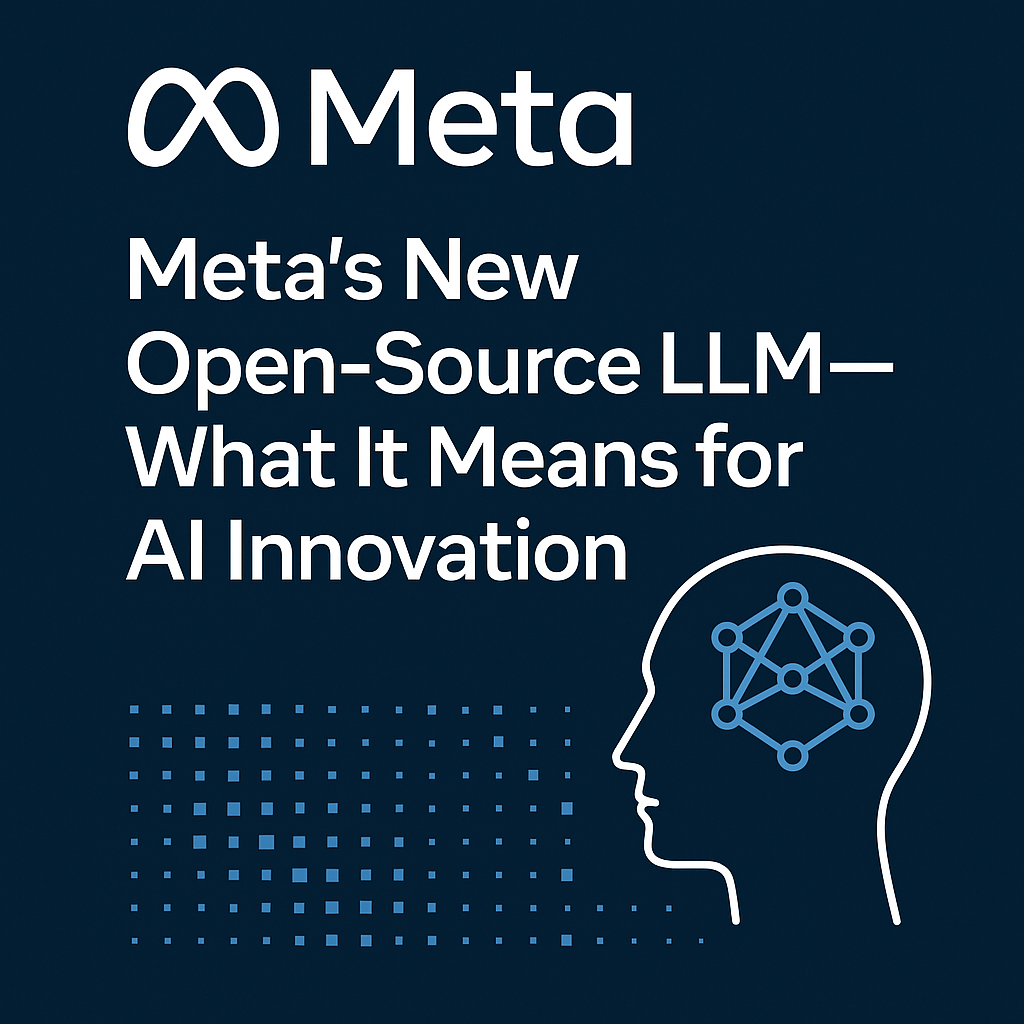In a significant move for the AI community, Meta has unveiled its latest open-source large language model (LLM) — a development that could shift how AI tools are built, shared, and improved worldwide.
Open-sourcing a cutting-edge LLM doesn’t just advance research — it accelerates innovation by allowing developers, startups, and even hobbyists to build on top of powerful AI technology without starting from scratch.
What is Meta’s New LLM?
Meta’s new LLM is designed to compete with — and in some areas, complement — existing models like OpenAI’s GPT, Google’s Gemini, and Anthropic’s Claude. By making the model open-source, Meta is inviting global collaboration, similar to how Linux transformed operating systems or how TensorFlow boosted machine learning adoption.
Unlike closed models, where access and capabilities are controlled by a single company, open-source LLMs allow:
- Greater transparency
- Community-driven improvements
- Customization for niche use cases
Why Open Source Matters for AI
An open-source LLM means:
- Faster Experimentation — Researchers and developers can fine-tune models without license restrictions.
- Wider Accessibility — Startups and independent creators can use enterprise-grade AI without massive budgets.
- Ethical Oversight — More eyes on the code and training data can help identify biases and improve fairness.
This could lead to more specialized AI tools, much like how different Linux distributions serve different purposes.
🔍 What This Means for Developers and Creators
For developers, an open-source LLM from Meta could:
- Reduce dependency on API-based access from private companies.
- Enable offline deployments for privacy-sensitive applications.
- Allow building domain-specific AI assistants for industries like healthcare, law, and education.
For creators and productivity enthusiasts, it opens up possibilities to integrate AI into custom workflows — without being tied to one provider’s pricing or terms.
🌐 How It Fits in the Current AI Landscape
This move will likely intensify competition with:
- OpenAI’s GPT models (see 7 Proven ChatGPT Techniques Every Advanced User Should Know)
- Google’s Gemini
- Anthropic’s Claude
If you’re new to AI tools, you might start by exploring beginner-friendly platforms before experimenting with open-source setups (see ChatGPT for Beginners: 7 Easy Ways to Boost Productivity with AI).
🛠 Tools That Could Work Alongside Meta’s LLM
Pairing Meta’s open-source model with productivity tools could make AI even more powerful. For example:
- Use AI-enhanced browser extensions to speed up workflows (see 10 Expert-Recommended Chrome Extensions to Maximize Productivity).
- Combine open-source AI with automation platforms like Zapier to create custom pipelines.
The Bigger Picture for AI Innovation
Meta’s release reflects a broader trend — AI is becoming more democratized. The more tools become accessible, the faster industries can adopt them and the more diverse the applications will be.
We could see:
- New startups forming around open-source AI services.
- Governments and NGOs using AI for public good.
- Educational institutions training the next generation of AI engineers on real-world tools.
💬 Final Thoughts
Meta’s open-source LLM is more than just a technical release — it’s a statement about the future of AI: one that is open, collaborative, and adaptable. Whether you’re a developer looking to build something groundbreaking or a creator exploring AI for the first time, this is a moment worth paying attention to.
The AI space is moving fast. Keeping up with tools, models, and techniques will be key to staying ahead — and with more open-source contributions, innovation is only going to accelerate.



